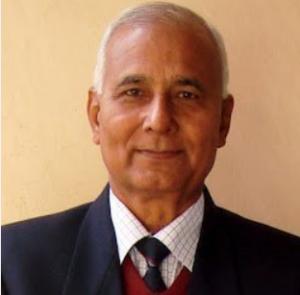Courtesy: Grok
Presentation: SR Darapuri, National President, All India Peoples Front

(Asian independent) Ram Rajya, often translated as “the Kingdom of Rama” or “Rama’s Rule,” is a concept rooted in Hindu tradition, particularly derived from the epic *Ramayana*. It refers to an idealized, utopian society governed by Lord Rama, an avatar of Vishnu, who is celebrated for his righteousness, justice, and adherence to *dharma* (moral and cosmic order). In popular imagination, Ram Rajya symbolizes a perfect state of governance where equality, prosperity, and harmony prevail, free from oppression, poverty, or injustice. The concept has been invoked historically in Indian political and cultural discourse, notably by Mahatma Gandhi, who envisioned it as a model for a just and equitable society.
The traditional narrative of Ram Rajya, as depicted in the *Ramayana* by Valmiki and later retellings like Tulsidas’s *Ramcharitmanas*, portrays Rama as a king who ensures the welfare of all his subjects, regardless of class or status. For instance, Rama’s interactions with figures like Shabari (a tribal woman) and Guha (a boatman from a lower social stratum) are often cited as evidence of his inclusivity and compassion. In this idealized vision, Ram Rajya promises a society where hierarchical distinctions, including those of caste, are transcended by just rule and mutual respect.
Impact on Dalits
However, the lived reality and interpretation of Ram Rajya, particularly for Dalits (historically marginalized communities formerly referred to as “untouchables” within the caste system), are complex and contested. The impact of this concept on Dalits can be understood through both its philosophical promise and its practical application in a caste-ridden society:
- Philosophical Promise of Equality
In theory, Ram Rajya’s emphasis on justice and *dharma* could imply the upliftment of Dalits. The narrative of Rama’s benevolence toward lower-status individuals is sometimes interpreted as a rejection of caste-based discrimination. Dalit thinkers and reformers, like Dr. B.R. Ambedkar, have occasionally engaged with such ideas, though Ambedkar himself was deeply critical of the *Ramayana* and its social implications. Some modern Dalit movements have reimagined Ram Rajya as a potential framework for emancipation, aligning it with their aspirations for equality and dignity.
- Historical and Social Reality
Despite its utopian ideals, the concept of Ram Rajya has often been co-opted by upper-caste narratives that reinforce traditional hierarchies. The *Ramayana* itself, while extolling Rama’s virtues, does not explicitly dismantle the caste system; it operates within a framework where *varnashrama dharma* (the duties of the four varnas) is upheld. For Dalits, this has meant that Ram Rajya, as interpreted by dominant groups, rarely translates into tangible liberation from caste oppression. Instead, it can perpetuate a romanticized view of the past that glosses over systemic inequalities.
- Political Instrumentalization
In contemporary India, Ram Rajya has been invoked by political movements, particularly those aligned with Hindutva (Hindu nationalism), as a vision for governance. While this rhetoric emphasizes unity and moral order, critics argue that it often sidelines Dalit concerns, prioritizing a homogenized Hindu identity over caste-based justice. Dalit activists have pointed out that such interpretations can marginalize their struggles, as the focus remains on symbolic reverence for Rama rather than addressing structural inequalities like untouchability, landlessness, or access to education.
- Dalit Critiques and Reinterpretations
Many Dalit intellectuals and communities have expressed ambivalence or outright rejection of Ram Rajya. For instance, Ambedkar famously criticized the *Ramayana* in his writings, such as *Riddles in Hinduism*, arguing that Rama’s actions (e.g., the killing of Shambuka, a Shudra ascetic, for performing penance forbidden to his caste) reflect the enforcement of caste norms rather than their abolition. This has led some Dalits to view Ram Rajya as a Brahmanical construct that upholds upper-caste hegemony rather than a liberatory ideal. Conversely, alternative Dalit narratives, such as those in oral traditions or reinterpretations by poets and scholars, sometimes recast Rama as a figure of resistance against oppression, though these remain less dominant.
Conclusion
The prevalent concept of Ram Rajya is one of an ideal society rooted in justice, righteousness, and harmony, drawing from the *Ramayana*’s depiction of Rama’s rule. For Dalits, its impact is dual-edged: it holds the potential for an inclusive vision but is often undermined by historical caste realities and modern political appropriations. While some see it as a call for equality, others critique it as a tool that preserves existing power structures. The tension lies in whether Ram Rajya can be reimagined to genuinely address Dalit liberation or remains a symbolic ideal that fails to confront the entrenched inequalities of caste.








